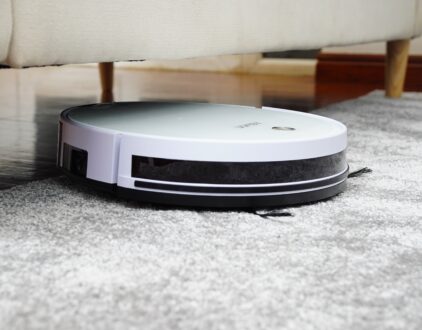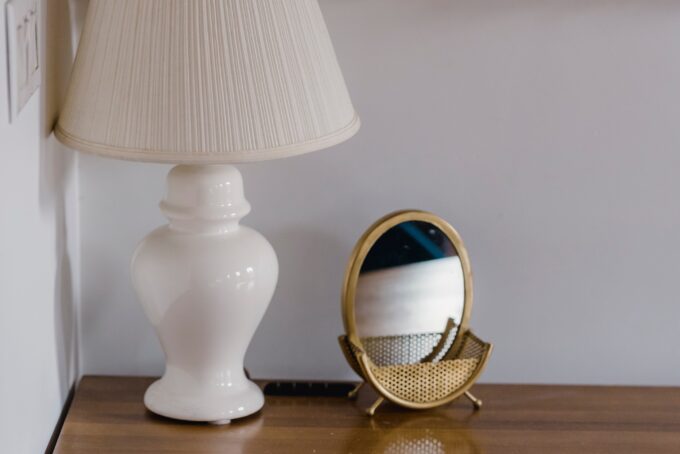Mold is a real problem in households today. Unfortunately, it’s not just a cleanliness issue. In other words, just because your house doesn’t look like you have a hoarding problem doesn’t mean that you also do not have a mold problem. Mold can be lurking in crevices, corners and under the floor boards. Oftentimes, it has to do with common things around the household like plants (more on this later). And where there is mold, oftentimes health problems are not far away for most people. You see, mold can lead to potentially dangerous health issues caused by mold toxicity. Mold toxicity, also known as mold illness or mycotoxin illness, can occur when individuals are exposed to certain types of mold and their toxic byproducts.
Molds are microscopic fungi typically found on damp or decaying organic matter, according to Dr. Eric Berg. Molds and their spores can mostly be found in wet and humid environments, as mold needs moisture to grow. You may find it anywhere from under the kitchen sink, to a corner in the bathroom. This makes it hard to spot and more likely than not, you probably don’t even realize it’s there until it starts to cause symptoms of illness. If you are experiencing any strange discomfort as of recent, pay attention to these 10 warning signs of mold toxicity.
One thing to remember as you go through these 10 different signs: not everyone is affected in the same manner. Some people are just more sensitive to mold and its toxins than others. Individuals with weakened immune systems, pre-existing respiratory conditions or certain genetic predispositions may be at higher risk. The level of illness is also dependent on the level of exposure. Those who have been living in the midst of greater amounts of mold for a longer period of time could face more risk.
While not everyone will react to mold in the same way, here are 10 warning signs of mold toxicity and symptoms that can result from it.
The 10 Most Common Signs or Symptoms That Suggest You Have Mold Exposure
- Respiratory Issues: Mold exposure can lead to respiratory problems such as coughing, wheezing, chest tightness and shortness of breath. It may also exacerbate conditions like asthma and bronchitis.
- Allergies: Mold spores are a common allergen. Symptoms can include sneezing, runny or stuffy nose, itchy or watery eyes and skin rashes.
- Fatigue: Mold toxicity can lead to chronic fatigue, weakness and a feeling of being constantly tired, even after a full night’s sleep. This is caused by the mold interfering with functions in the brain that provide the body energy.
- Headaches: Frequent headaches, including migraines, can be a sign of mold exposure.
- Brain Fog: Many individuals report difficulty concentrating, memory problems and a feeling of mental fogginess when exposed to mold from it entering the brain or central nervous system.
- Joint Pain: Joint pain and stiffness are common symptoms of mold toxicity, often resembling arthritis when it persists in these areas of the body.
- Digestive Issues: Mold toxicity can lead to gastrointestinal problems, including diarrhea, nausea and abdominal pain. This is usually caused by food in the home being contaminated.
- Skin Problems: Skin rashes, hives and itching are common symptoms associated with mold exposure.
- Sensitivity to Light and Noise: Some people with mold toxicity report increased sensitivity to light and noise, leading to discomfort.
- Mood Swings: Changes in mood, including anxiety, depression and irritability, have been linked to mold exposure. This is because the mold spores have been found to disrupt normal brain processes and create an imbalance in the production of neurotransmitters such as dopamine and serotonin, according to Dr. Berg. These neurotransmitters are needed for mood and emotional regulation.
It’s important to note that these symptoms can vary in severity and may mimic other health conditions, making it challenging to diagnose mold toxicity based solely on symptoms. If you suspect mold exposure and are experiencing these symptoms, you should consult the help of a healthcare professional. Additionally, addressing the source of the mold and seeking professional mold remediation is crucial to mitigate further exposure.
While there are thousands of different types of molds, with most of them being harmless according to Berg, the bad mold like you see on rotting food is what you want to watch out for. Preventing that mold is even better than waiting for one of the 10 warning signs of mold toxicity to wake up the problem for you.
Once mold sets in, it can be very problematic to treat as it can be persistent in its spread throughout a house. One way to proactively head of mold is by taking preventative measures from the beginning. Here are 10 effective ways to prevent mold from growing in your home.
10 of the Best Ways to Prevent Mold Toxicity
- Control Humidity: Keep indoor humidity levels between 30-50 percent. Use dehumidifiers in areas prone to moisture, like basements, bathrooms and crawl spaces.
- Proper Ventilation: Ensure good ventilation in bathrooms, kitchens and other areas where moisture accumulates. Use exhaust fans to remove excess moisture. Open windows to improve airflow and reduce humidity, weather permitting.
- Address Leaks and Water Intrusion: Repair leaks in roofs, walls, windows and plumbing as soon as they are detected. Properly seal and insulate windows, doors and other potential points of water intrusion.
- Maintain Proper Insulation: Adequate insulation can prevent condensation on cold surfaces, which can lead to mold growth. Insulate walls, windows and pipes.
- Keep Living Areas Clean: Regularly clean and dust your home to prevent organic materials that mold can feed on from accumulating. Vacuum and clean carpets, rugs and upholstery regularly.
- Use Mold-Resistant Products.
- Keep Indoor Plants in Check: Houseplants can contribute to humidity levels. Be mindful of their care and moisture levels.
- Store Items Wisely: Store items away from exterior walls, which can be cooler and more prone to condensation. Use plastic containers instead of cardboard for items stored in basements and garages.
- Address Floods and Water Damage Immediately: In the event of a flood or significant water damage, act quickly to remove water, dry affected areas and discard water-damaged materials to prevent mold growth.
- Regular Inspections: Avoid installing carpet in areas prone to moisture, as it can trap moisture and promote mold growth.
Sometimes, you will still find mold even when you have done everything right to prevent it. If you are dealing with excessive mold growth or find spores lingering throughout the house, seemingly popping up out of no where, it might be time to call a mold specialist. Such specialists can treat your home and get to the root cause of the problem, thus preventing future spread as well as ensuring that your health is secure.
popular posts
- 1It’s Black Business Month, So Let’s Go Shopping and #BuyBlack!
- 2These Home Decor Items Will Instantly Make Your Space Look Outdated
- 3Black-Owned Home Decor Stores To Support Across the United States
- 4A Look Inside Elon Musk's Tiny $50,000 House
- 57 Black and Multicultural Designers To Follow For Design Inspo

Home & Texture Editor's Picks: The 5 Best Vacuums on Amazon
by Stephanie Taylor | February 2, 2023

7 New And Bestselling simplehuman Products To Help Your Home Run Smoothly
by Stephanie Taylor | February 15, 2023

Product Review: Here's What We Think About The Levoit LV600s Humidifier
by Nneya Richards | February 22, 2023
Spaces
Whether it’s luxury or ease, every area of your home should be as fabulous and unique as you.
FOLLOW ALONG ON INSTAGRAM
#homeandtexture
Find us on social for more home inspiration where culture, personal style, and sophisticated shopping intersect to help you create a home where you love to live.





